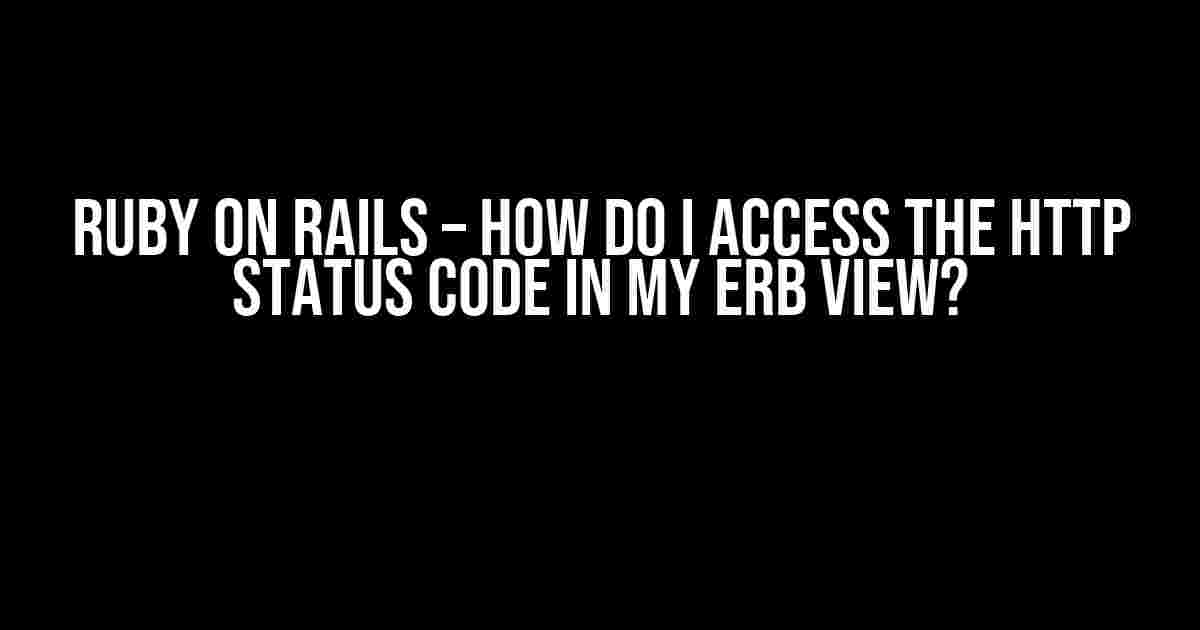In Ruby on Rails, accessing the HTTP status code in an ERB view can be achieved through the use of the `response` object.
Accessing the HTTP Status Code
In your ERB view, you can access the HTTP status code using the following code:
<% if response.response_code == 404 %>
<% elsif response.response_code == 500 %>
<% else %>
<% end %>Alternative Approach
You can also use the `request` object to access the HTTP status code:
<% if request.env['rack.status'] == 404 %>
<% elsif request.env['rack.status'] == 500 %>
<% else %>
<% end %>Using a Helper Method
Alternatively, you can create a helper method in your application helper to encapsulate the logic:
module ApplicationHelper
def http_status_code
response.response_code
end
endThen, in your ERB view, you can call the helper method:
<% if http_status_code == 404 %>
<% elsif http_status_code == 500 %>
<% else %>
<% end %>Remember to adjust the code according to your specific requirements and error handling needs.
Frequently Asked Question
Ruby on Rails is an amazing web framework, but sometimes we need a little help figuring out how things work. Here are some answers to common questions about accessing the HTTP status code in an ERB view:
How do I access the HTTP status code in my ERB view?
You can access the HTTP status code in your ERB view using the `response` object. Specifically, you can use `response.code` to get the current status code. For example: `<%= response.code %>`.
Is the HTTP status code only available in the controller?
Nope! While you can set the HTTP status code in your controller using `render` or `redirect_to`, the `response` object is available in your ERB view as well. This means you can access the status code in your view, even if it was set in the controller.
Can I use the HTTP status code to customize my error pages?
Absolutely! By accessing the HTTP status code in your ERB view, you can create custom error pages that respond differently to different status codes. For example, you could create a custom 404 page by checking if `response.code == 404`. Get creative!
Is there a way to access the HTTP status code in a Rails helper?
Yes, you can access the HTTP status code in a Rails helper by using the `controller.response` object. For example: `controller.response.code`. This allows you to create reusable code that can be shared across your application.
Will accessing the HTTP status code in my ERB view affect performance?
No, accessing the HTTP status code in your ERB view is a relatively lightweight operation and won’t have a significant impact on performance. So go ahead and use it to create those custom error pages!

